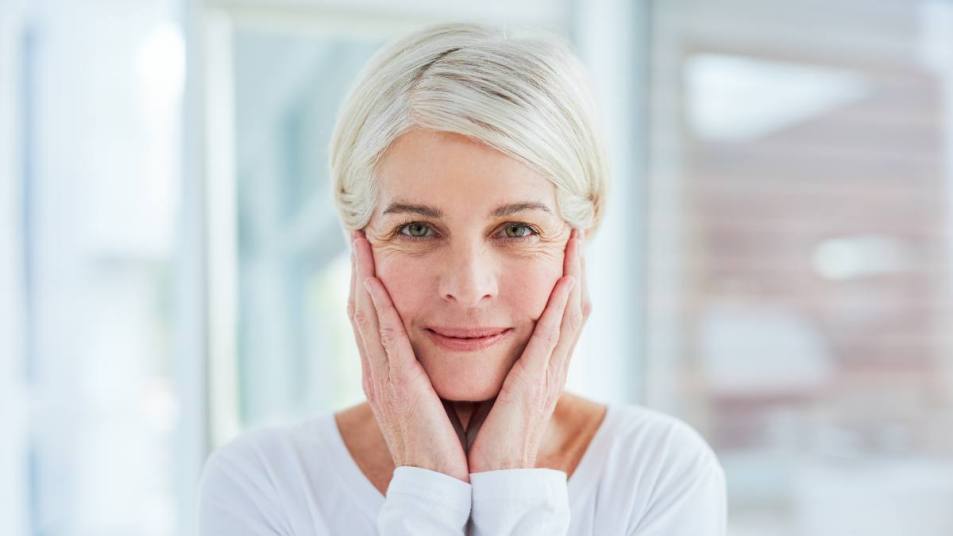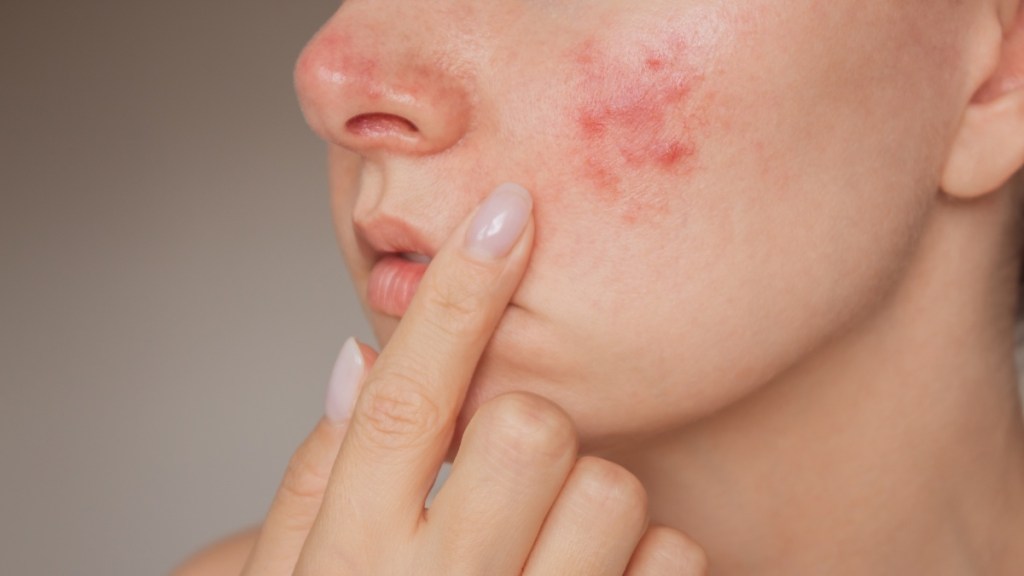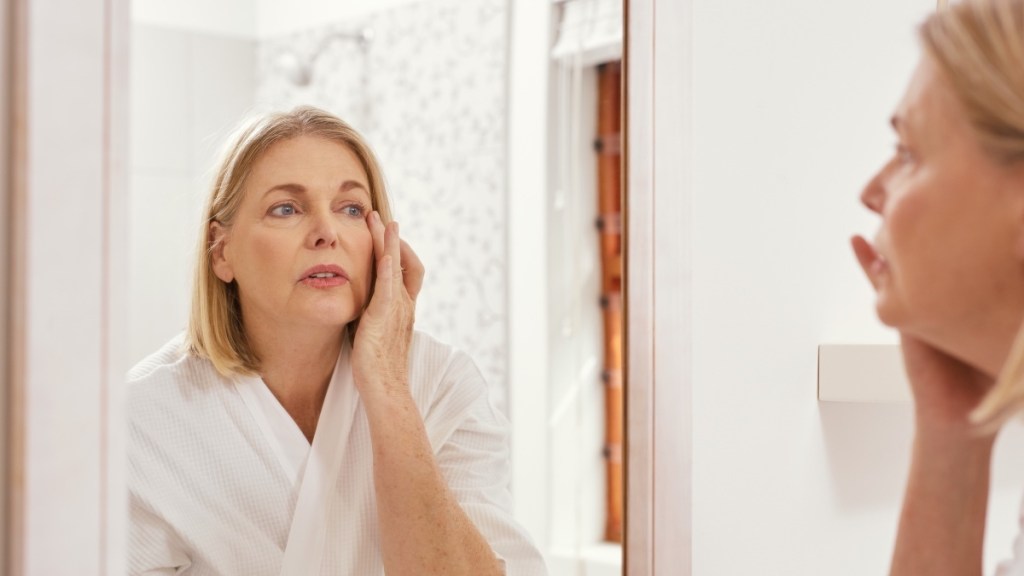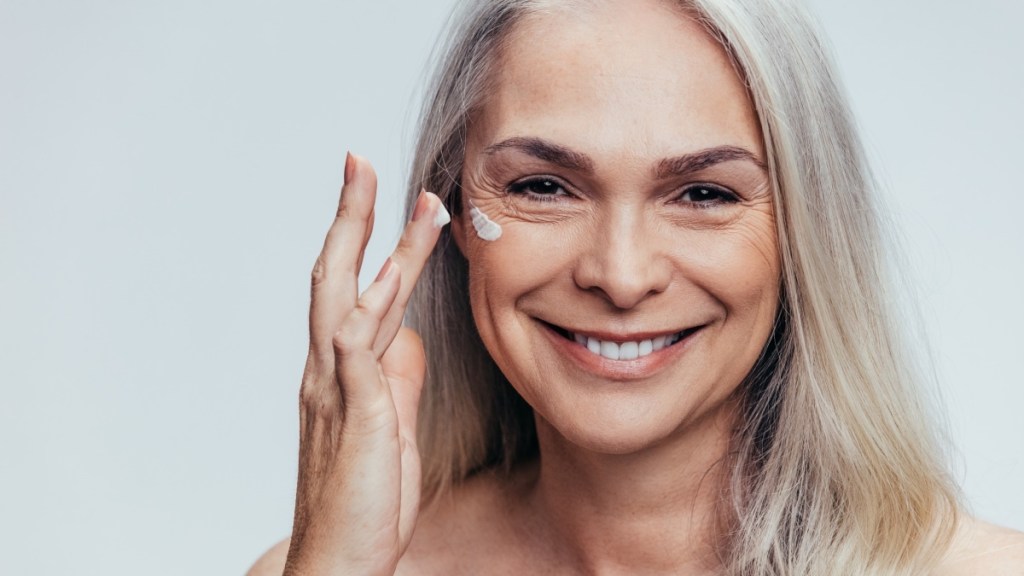Say Goodbye to Redness, Bumps & Irritation — Dermatologists Reveal How to Get Rid of Rosacea
Find out why you should only wash your face once daily at this time to block irritation

The occasional bumps or redness on your complexion over the years are generally nothing to worry about. After all, who doesn’t remember teenage breakouts or coming home from a family vacation with a sunburn (ouch!). For those of us with rosacea, however, bumps and redness aren’t temporary. They’re chronic and can even be painful. If you have the condition, you may be wondering how to get rid of rosacea permanently. While there’s no cure for rosacea, you can dramatically dial down symptoms with a few rosacea self-care tips so you look and feel your best. Here’s how.
What is rosacea?
Rosacea is a chronic inflammatory skin condition common in women, says Lauren Fine, MD, a board-certified dermatologist based in Chicago and member of the American Academy of Dermatology (AAD). The National Rosacea Society estimates that 16 million Americans deal with rosacea, and many cases go undiagnosed.
When you have inflammation in the body (which we all do, to varying degrees) it can exhibit itself in different ways. “Rosacea is a reflection of how someone’s body is reacting to inflammation,” explains Dr. Fine. This means that pinpointing a cause of rosacea is often difficult.
“A rosacea patient usually has chronic inflammation plus neurovascular regulatory disorder,” says Hilary Baldwin, MD, a board-certified dermatologist, clinical associate professor of dermatology at Rutgers Robert Wood Johnson Medical Center and member of the National Rosacea Society medical advisory board. Besides bumps and inflammation, there may be a burning or stinging sensation when exposed to certain triggers (more on that below).

Signs and symptoms of rosacea
One of the reasons so many cases go undiagnosed is because rosacea — which primarily occurs on the face — can look different from person to person.
“It can be a lot of redness or it can involve bumps that look like acne,” says Dr. Fine. “Some people get bumps and redness together, while others only experience redness or blushing. Rosacea can also look like broken facial blood vessels, especially in the capillaries around the nose or scattered throughout the cheeks and face.”
The most common signs of rosacea include:
- Redness or flushing
- Acne-like breakouts. Rosacea does not develop blackheads, but acne does. This is a distinguishing symptom that helps dermatologists diagnose rosacea.
- A stinging or burning sensation during flushing.
- Phymas, or swollen nodules that make the skin look thicker, such as on the nose. (Dr. Baldwin says this is symptom more common in men than women.)
- Eye irritation, including itching, stinging, cysts near the eye and broken blood vessels on the eyelid. (Click through to learn about how ocular rosacea can cause a swollen eyelid.)
- Visibly enlarged or broken blood vessels on the face.
Dr. Fine says these symptoms become more visible when exposed to certain triggers, such as:
- Hot or cold temperatures (including sun and wind exposure)
- Spicy foods
- Alcohol
- Stress (Click through to learn how mushroom coffee tames tension)
- Exercise
- Certain medications or skincare products (especially ones that can dry skin out like acids, certain exfoliators and products with fragrance)
Women are more prone to rosacea than men
Both Dr. Fine and Dr. Baldwin say women between the ages of 30 to 50 are the typical rosacea patient (Dr. Baldwin adds this may be because they are more likely to seek care than men). “As women approach menopause, the skin dries out and becomes more sensitive,” explains Dr. Fine. “This can be a trigger for when rosacea begins to develop.”

It’s important to note that women with richly pigmented or darker skin tones are often under-diagnosed. “It may be more difficult to see the redness, so it’s important to take note of any heat or burning sensations you feel, as it’s more difficult to spot flushing,” explains Dr. Baldwin.
How to get rid of rosacea permanently
Unfortunately, there’s no way to truly get rid of rosacea permanently. That said, there are several in-office treatments and rosacea self-care steps you can take at home to control redness, bumps and other symptoms. “With the right types of products and skincare modifications, rosacea may be something that is very easy to control and it may not lead to a chronic flaring condition,” says Dr. Fine.
Here are some of the best self-care strategies for managing rosacea:
1. Track your triggers
It’s difficult to know what your triggers are before you experience them, so take note of how you feel in certain temperatures and after eating certain foods. If a flare-up occurs (where that sensation of heat, burning or tingling happens suddenly) write it down so you can look for a pattern. Dr. Baldwin says reducing your exposure to these triggers will keep flare-ups under control.
If you can’t avoid a trigger (say you’re going to the beach where there will be lots of sun and heat) make sure to take breaks inside, stay in the shade when possible and slather on sunscreen. If wind causes flare-ups, keep your face covered on blustery days. And for a trigger like exercise, this doesn’t mean you shouldn’t exercise at all. Just make sure to stick to low-to-medium intensity to keep your body’s core temperature from getting too hot.

2. Practice gentle skin care
“This means no acids, no exfoliants, quality moisturizers, gentle cleansers and a good sunscreen,” says Dr. Baldwin. “When I discuss with my patients cleaning their face, I recommend they use a gentle cleanser and their hands. Just soap and water — no face brushes.” Dr. Baldwin recommends the following cleansers:
- Cetaphil Gentle Skin Cleanser
- CeraVe Hydrating Cream-to-Foam Cleanser
- La Roche-Posay Toleriane Hydrating Gentle Facial Cleanser
- Neutrogena Hydro Boost Hydrating Gel Cleanser
Also smart: Washing your face once a day before bed. “Every time you put water and soap on your face, you’re removing nature’s moisturizer that your skin makes,” she says. “There’s nothing that you can put on your face that’s in a jar that’s better than what you already have.”
3. Try a prescription
Dr. Fine says there are no medications that can repair broken blood vessels or get rid of the generalized redness that comes with rosacea permanently. But if your rosacea symptoms include raised or pus-filled bumps, a prescription for ivermectin or metronidazole can help. There are over-the-counter versions of ivermectin available, but a prescription strength (called Stromectol) is more effective.
“Over the past few years, there have also been tweaks to existing medications like a micronized benzoyl peroxide that was primarily used to treat acne but can now help with certain rosacea cases, too,” adds Dr. Fine. Your dermatologist will be able to prescribe the best medication for you.

4. Consider red light therapy
If your rosacea symptoms are redness or broken blood vessels, speak to your dermatologist about light therapy. Dr. Fine says she uses a pulsed dye laser to help reduce inflammation at a cellular level, which can clear up redness that comes with rosacea. Insurance typically does not cover this, and Dr. Fine says it can cost between $250-$700 per session.
If professional red light light therapy sessions aren’t in the budget, you can buy an OTC red-light laser mask to use at home. While it won’t get rid of rosacea permanently, it can help tamp down visible irritation. Your dermatologist can help provide recommendations on the best type of red light device for you.
Need a quick fix? Go green
While your rosacea self-care strategies work their magic, you can temporarily disguise redness by opting for green-tinted makeup. “You can buy a green foundation or a liquid green tint that you can add to your foundation to help to dampen the redness that you see,” says Dr. Baldwin. “Stick with makeup that’s easy to remove to avoid scrubbing and irritating the skin.” (Click through to see the best makeup for rosacea.)
For more ways to keep your skin healthy:
Taking a Bath With This Laundry Staple Can Help Relieve Eczema, According to MDs
Manuka Honey Is the Natural Cure for Inflamed, Dull and Wrinkly Skin — Here’s How to Use It
Joint Pain + Rash May Be Early Warning Signs of Psoriatic Arthritis — Here’s What Can Help
This content is not a substitute for professional medical advice or diagnosis. Always consult your physician before pursuing any treatment plan.


















